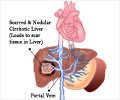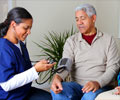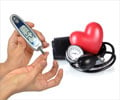A few one-on-one coaching sessions delivered by health professionals can eliminate racial disparities in the outcomes of programs to control blood pressure.

‘Sessions followed a motivational interviewing pattern in which care managers asked patients to think through the solutions themselves rather than merely doling out advice.’





"For people who can come to a clinic-based program, that program may work really well, but it's not enough in and of itself to eliminate the racial disparities we see in efforts to reduce blood pressure and other chronic diseases," says Lisa A. Cooper, M.D.,M.P.H, vice president of Health Care Equity for Johns Hopkins Medicine and professor of medicine at the Johns Hopkins University School of Medicine. "Success requires a broader and more comprehensive strategy." In a commentary accompanying the study, Cooper, who has studied racial disparities in health outcomes for decades, lays out the scope of the problem. She notes that compared with Whites in the U.S. population, African Americans are 80 percent more likely to die from stroke and 50 percent more likely to die of heart disease. African Americans also suffer from a 320 percent higher rate of end-stage renal disease. Each of these conditions is fueled by uncontrolled hypertension, especially among urban poor populations, where geographic wealth and racial inequities are stark.
For instance, in the Roland Park/Poplar Hill neighborhood of the city, which has a median income greater than $90,000, the rate of deaths from heart disease is 14.1 out of 10,000 individuals. Just five miles away, in the Madison/East End neighborhood, the median income is just over $30,000, and the rate of deaths from heart disease jumps to 35.4 out of 10,000 individuals. The difference in outcomes is dramatic. A person living in Madison/East End is expected to live 64.8 years - 18.3 years less than a person in Roland Park/Poplar Hill.
When team members reached patients, they asked them if they'd be interested in joining a program to lower blood pressure. Anyone participating, they explained, would have to visit the clinic nearest them three times over three months to meet with a specially trained pharmacist, dietitian, or both. The program included one 60-minute session and two 30-minute sessions, or approximately 120 minutes of contact time overall.
A total of 629 individuals participated in at least one session in the clinic - some 9 percent of those reached by phone - or 184 individuals along with 445 others who were referred to the program by their physicians.
Advertisement
Under the program's setup, participants met with pharmacists to address concerns with medication and also met with dietitians to work on improving their diets. For instance, if a patient knew she needed to lose weight and did not feel up to that task but felt confident about trying a new system to stay on track with her medicines, the care manager would work with the patient on a plan to help her take her medication every morning as an attainable goal. The care manager also asked patients about their support systems and tried to work through potential challenges to success.
Advertisement
The 337 participants who completed one or two sessions also experienced a greater drop in blood pressure than nonparticipants, but to a lesser degree. On average, for partial completers, systolic blood pressure dropped 5 mm Hg more, and diastolic blood pressure dropped 2 mm Hg more than it did in non-participating patients eligible for the program (that is, patients who had visited one of the six participating clinics in the past year and had a blood pressure reading higher than 140/90 mm Hg).
"To stay healthy or to treat chronic illness is not just about what happens in a 15-20 minute office visit to the doctor. What really matters is a person's ability to follow through on recommendations regarding changes in diet, lifestyle and medication use the rest of the time as they go about their daily lives at home, at work and in the community," says Cooper. "In addition to addressing medical needs, health system programs should also address patients' social, cultural, and financial needs, using partnerships with other sectors of the community to enhance program effectiveness and outreach to those most in need."
Source-Newswise















